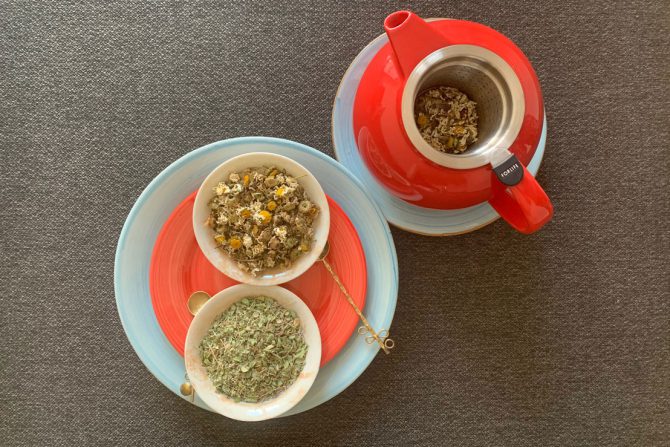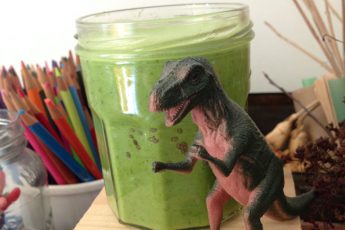The True Tale of Chamomile & Thyme Persian Herbal Tea
NOTE: Written in pre-apocalypse days but not published, there’s a sentence somewhere in this post that in retrospect is … haunting! (Extra credit if you figure out which sentence I mean.) In these days of the modern plague, I’ve concocted a very special herbal tea mixture I brew and drink daily that I’ve dubbed My Magic Persian Tea and I credit it (science be damned) with warding off the Corona virus. The foundation of this potent tea was just a comobo of chamomile and thyme at first, but I then added a few more potent herbal ingredients to my potion. A followup post will reveal all the secret ingredients and the process of how you can create and brew your very own soothing and immunity boosting Magic Persian Tea! But first the tale of the goodness and myriad health benefits of our fine herbal pals: chamomile and thyme.
♣
You can find chamomile growing wild in the mountains of Tehran. Early July — the beginning of camomile blooming season — a friend and I went mountain hiking and spotted some delicate blooms. Did you know that chamomile flowers look just like tiny white daisies? So dainty and cute! I picked a few sprigs off the edge of a cliff, and have saved them since, tucked into a little vase.

Can you spot my handpicked camomile heirlooms?
In general, when I’m in need of chamomile I don’t head to the mountains and instead walk 10 minutes to the traditional Persian herbal medicine store in my neighborhood run by a seasoned lady with twinkling eyes; a lilting & charming Tabrizi accent; and an authoritative stand on matters pertaining to one’s health. I’ve dubbed her “Hakim Khanoom“.
I first met Hakim Khanoom when I was desperate to find a cure for my terrible insomnia and went to buy dried lavender (or “ostoogoodoss” as it is called here, isn’t that an interesting word?) which I’d heard could promote a good night’s sleep. Hakim Khanoom endorsed the lavender but firmly suggested that I should combine it with camomile for a more potent bedtime tea. She also gave me a vial of violet oil with the directions to rub a few drops on my temples and upper lip just prior to going to sleep. Her advice proved helpful and since then, what can I say, I’m a devotee of this twinkle-eyed wise and wisecracking herbalist.
So when I kept suffering the lingering symptoms of a truly stubborn cold that I just could not shake off even after taking plenty of pills and cough syrups I turned to Hakim Khanoom. In turn, she steered me to a tea made with chamomile and thyme.

A cup of chamomile and thyme herbal tea is a tonic
What is chamomile good for?
The health benefits of chamomile tea are many:
- Chamomile is loaded with antioxidants — the type of antioxidants that seem helpful in lowering the risk of heart disease and cancer.
- Chamomile tea with its emollient, anti-inflammatory and anti-anxiety properties may help reduce insomnia; aid digestion; boost immunity; and even reduce anxiety.
- Chamomile tea, helping calm and relax nerves, is the perfect nightcap.
- In Iran, it is common practice to use camomile tea to alleviate menstrual cramps.
- (Read more about camomile’s benefits here.)
By the way, is it chamomile or camomile? How do you spell it? Confusingly enough, both spellings are used. Alrighty then. In any event, way to go, chamomile aka camomile!
What are the benefits of thyme?
I’ve long been a devotee of chamomile tea but was familiar with thyme only as a culinary ingredient. After Hakim Khanoom prescribed thyme I did some research and found out that the alleged health benefits of thyme are amazingly substantial:
- Thyme is packed with Omega-3, a nutrient believed to prevent the effects of aging.
- Thyme is believed to improve digestion and soothe an upset stomach.
- In ancient times and well into the middle ages, thyme was associated with courage and bravery and as such, was given as a totem to soldiers about to go into battle. “The smoke of thyme was thought to evoke a spirit of courage in those who inhaled it, and if death should be the fate of the soldier it was believed to be a powerful aid to the journey into the afterlife.” (Source)
- The ancient Greeks and Romans burned thyme as incense to restore strength and clarity to the mind and to clear the air of illnesses and diseases.
- Thyme’s natural antibacterial qualities have proven a potent remedy for sore throat and coughing.
- Thyme and sage have now been proven to effectively neutralize dangerous airborne bacteria and microbes.
- Thyme was used in the fight against the Black Death that plagued Europe in the 1340’s.
Wow! Let’s unleash the incredible powers of thyme!
How to make chamomile and thyme tea?
Hakim Khanoom’s directions to me were to “brew a big pot of tea with a heaping spoonful of each, drink some in the morning, some at noon, rest at night” and thus they were followed. I make one big pot in the morning (that I keep hot) and drink it up during the day in intervals.
The color of thyme and camomile brewed tea is golden and its scent is herbilicious. As for taste, it is frankly yet blandly bitter … if that makes sense.
Does the chamomile and thyme Persian tea deliver on its lofty promises?
I can’t swear that this”babooneh & avishan” tea will cure your cough or sore throat or that it will prevent the next outbreak (God forbid) of the Plague.
But, I can vouch for the following facts:
- It did seem to speed my healing process;
- It is a very soothing herbal tea, and
- It does have the pedigree of being endorsed by the ancient Romans, Greeks, Egyptians, and Persians!
- I now habitually sip this immunity-boosting herbal tonic as a soothing bedtime ritual to relax and unwind.
Why now try it for yourself?
♣
Take care and stay healthy!




Do you have a sixth sense or what? The “next outbreak of the Plague“?
You found it! No 6th sense I’m afraid — I remember I was just thinking “thank God we don’t have to worry about the plague in our time” … joke’s on us